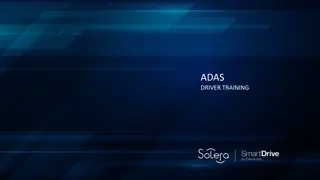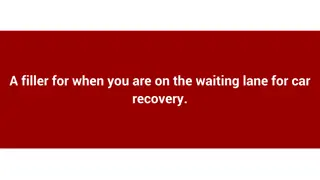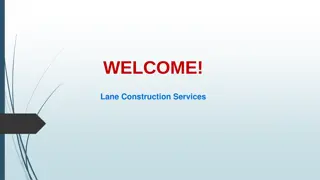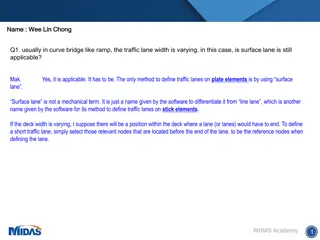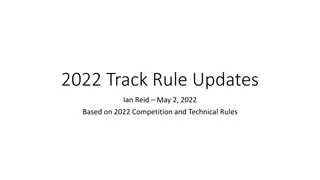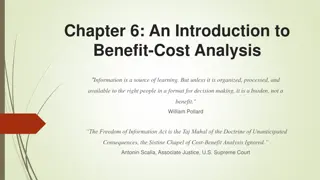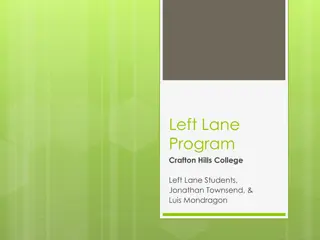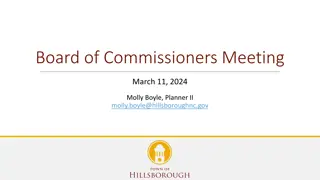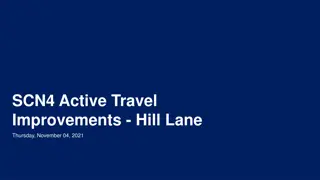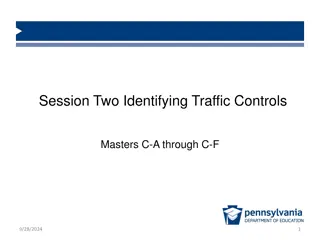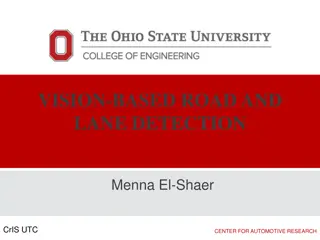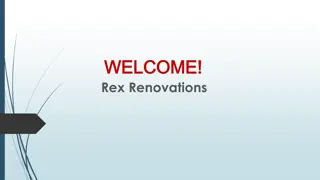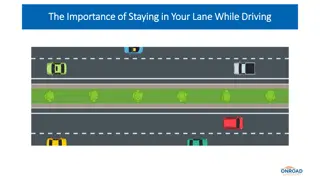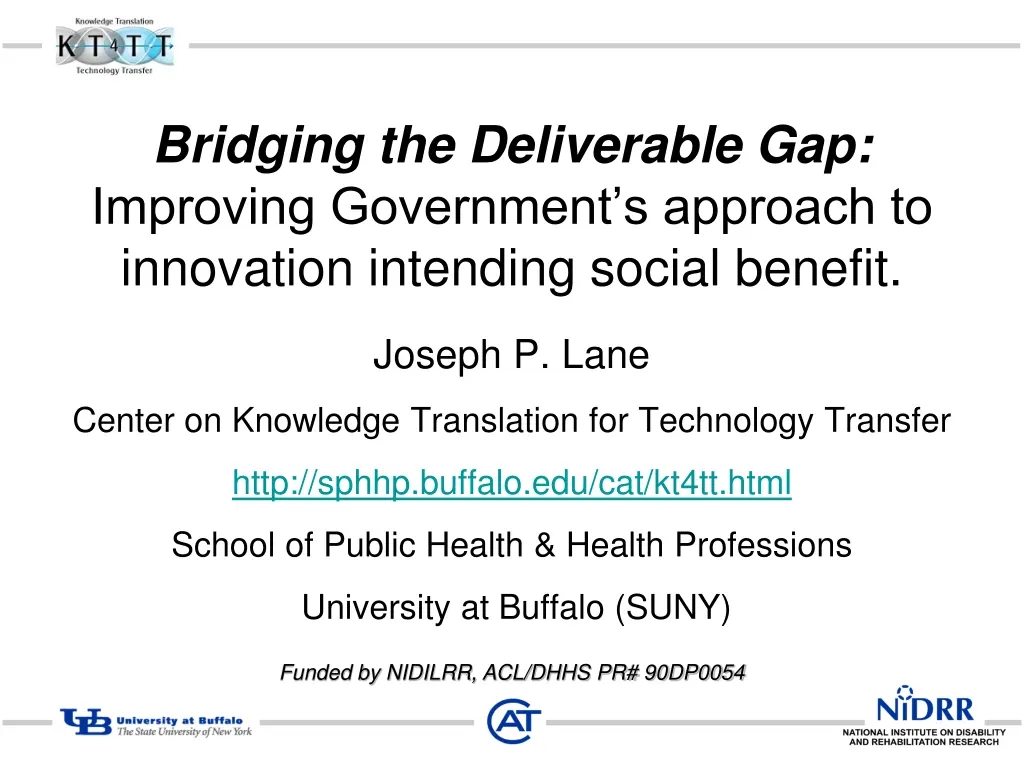
Improving Government Innovation for Societal Benefit
Bridging the gap between government funding for research and development and society's need for beneficial outcomes is crucial for addressing market failures and fulfilling societal needs through innovation. This session explores the challenges and opportunities in government sponsorship of R&D and the importance of aligning investments with socio-economic impacts.
Download Presentation

Please find below an Image/Link to download the presentation.
The content on the website is provided AS IS for your information and personal use only. It may not be sold, licensed, or shared on other websites without obtaining consent from the author. If you encounter any issues during the download, it is possible that the publisher has removed the file from their server.
You are allowed to download the files provided on this website for personal or commercial use, subject to the condition that they are used lawfully. All files are the property of their respective owners.
The content on the website is provided AS IS for your information and personal use only. It may not be sold, licensed, or shared on other websites without obtaining consent from the author.
E N D
Presentation Transcript
Bridging the Deliverable Gap: Improving Government s approach to innovation intending social benefit. Joseph P. Lane Center on Knowledge Translation for Technology Transfer http://sphhp.buffalo.edu/cat/kt4tt.html School of Public Health & Health Professions University at Buffalo (SUNY) Funded by NIDILRR, ACL/DHHS PR# 90DP0054
Whats this session about? It s about [Bridging the Gap] between government funding for R&D and society s need for beneficial deliverables: The free market forces of industry address most societal needs for technological innovation, except those too large, too small, too late or premature . . . Government s address some of these market failures by investing public funds, but success requires proper alignment between investment, value chain and results. Government sponsorship of university-led R&D in AT field is ineffective; it requires sector realignment to deliver intended socio-economic outcomes and impacts.
Commercial Innovation Markets Industry delivers technological innovations to society when they meet standard commercial market requirements (market size; customer affluence; high profit margin; low entry barriers): Market Opportunity Industry R&D Deliver Product
Conditions of Market Failure When standard business conditions are not met -- but need is deemed important to society -- government s supply the necessary resources to fill market gaps. Science, Technology & Innovation (STI) Policies address societal needs for new to the world knowledge under conditions of market failure. Problems arise when people define new knowledge only in the context of scholarship.
Government STI Policies Public tax dollars allocated to generate new knowledge outputs embodied in 3 different states: Scientific research Conceptual Discoveries (know what ?) Engineering Development Tangible Inventions (know how ?) Industrial Production Product Innovations (know why ?)
DISCOVERY STATE: Governments sponsor universities to expand the base of fundamental knowledge. Need for fundamental knowledge Government Universities Basic Research Discoveries Scholarly Publications Societal Impact ???
INVENTION STATE: Governments sponsor R&D laboratories to transform discoveries into tangible prototypes in critical fields of practice. Need for breakthrough prototypes Government Applied SR & Experimental ED Proof of Concept Prototypes Society Impact ???
INNOVATION STATE: Governments sponsor industry to design, build, test and deliver next generation products meeting pre-determined specifications and then serve as primary customer for the resulting products. Product performance requirements Government Industry Universities & Functional Product Industry delivers product to Government Government Labs
Innovation in AT Given that industry leads product innovation, what does AT industry need? - New fundamental discoveries in basic science? - Entrepreneurs reinventing square wheels ? - Faculty and students supplying bright ideas and alpha prototypes in their spare time? No! The AT industry needs governments to define critical performance requirements, and supply the missing market conditions: Reimbursement, Infrastructure and Information ( Public Procurement for Innovaiton )!
Related Publications Lane,JP, Godin, B. (2013)Methodology Trumps Mythology, Bridges, Office of Science & Technology, Embassy of Austria, Washington, DC, 36. http://ostaustria.org/programs-projects- english/event-management/2013-04-23-10-55-57/2003-2001/382-categories-all/magazine/volume- 36-december-14-2012/opeds-a-commentaries/6002-methodology-trumps-mythology Lane, JP, Godin, B, (2012) Is America s Science, Technology, and Innovation Policy Open for Business? Science Progress, June 12, 2012, http://scienceprogress.org/2012/06/is- america%E2%80%99s-science-technology-and-innovation-policy-open-for-business/ Flagg, J, Lane, J., & Lockett M. (2013) Need to Knowledge (NtK) Model: An Evidence-based Framework for Generating Technology-based Innovations.Implementation Science, 8, 21, http://www.implementationscience.com/content/8/1/21 Stone, V. & Lane J (2012). Modeling the Technology Innovation Process: How the implementation of science, engineering and industry methods combine to generate beneficial socio-economic impacts. Implementation Science, 7, 1, 44. http://www.implementationscience.com/content/7/1/44. Lane, J & Flagg, J. (2010). Translating 3 States of Knowledge: Discovery, Invention & Innovation.Implementation Science, 5, 1, 9. http://www.implementationscience.com/content/5/1/9. Edquist, C, et al (2015). Public Procurement for Innovation. Cheltenham, UK: Elgar Publishing Inc. http://www.e-elgar.com/shop/public-procurement-for-innovation.
Issues in Science, Technology & Innovation Policies. Three States of Knowledge Origins, Relationships & Transitions. Comprehensive Model of Technological Innovation. Tools for Effective Knowledge Translation. Tools for Successful Technology Transfer. Tools for Achieving Invention Commercialization. Market Research Resources.
ACKNOWLEDGEMENT The contents were created under a cooperative agreement from the National Institute on Disability, Independent Living, and Rehabilitation Research (#90DP0054). NIDILRR is a Center within the Administration for Community Living (ACL), Department of Health and Human Services (HHS). The contents do not necessarily represent the policy of NIDILRR, ACL, HHS, and you should not assume endorsement by the Federal Government.

